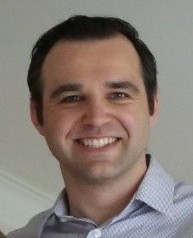Helitem2: New Technology in Airborne TEM for Deep and Covered Targets with Western Australia Examples
Adam Smiarowski, Chief Geophysicist at CGG
Date & Time: 20thAugust 2020; 12 – 1PM AWST
Please register here https://us02web.zoom.us/webinar/register/WN_x4nG-nqoRiqRmsGyXj485g
Abstract:
Exploration for targets at depth or targets obscured by conductive overburden have historically been a challenge with airborne EM methods. Although modern systems have been improved with greater primary transmitter moments, noise levels from receiver coil motion in the Earth’s ambient field has limited the detection of secondary target signals, especially at late times, and has limited the use of lower base frequencies. The new Helitem² system uses a patented low-noise receiver, a 50% duty cycle square pulse transmitter waveform, and low Tx base frequency, to achieve increased signal detectability for deep and covered targets.
Modeling and a series of demonstration surveys compared several helicopter-borne time-domain system configurations, including high-moment halfsine waveforms and low base frequency (15 Hz and 7.5 Hz) 50% duty cycle square waveforms.
Using a thin-plate, modelling showed that a low base frequency square pulse will have a significantly larger response than a half sine pulse at standard 30 Hz base frequency for a wide range of target conductances. At early times, the sharper (quicker) turn off of the square wave results in much more high-frequency energy, and therefore better signal, for weakly conductive targets, and better near-surface resolution. At the other extreme, the response from very conductive targets is determined by the area under the transmitter curve, so the low frequency square waves with 16 and 33 ms widths produces more than twice the signal as the half sine.
Demonstration survey line profiles and decay curves over the target and background locations confirmed this modelling for a 400 m deep target and variable overburden. The combination of pulse width, power, and low noise enabled the Helitem2 system to be effective at low base frequencies, where very late time data is beneficial for detecting strong and deep targets. The survey demonstrated that the redesigned Rx suspension system was able to reduce coil motion noise, enabling acquisition of high quality low base frequency data useful for detection of deep targets to very late times. The wide-pulse waveform was effective at energizing a moderately-conductive target, increasing signal level by a factor of 2 above a 6 ms pulse. This will be even more beneficial when exploring for strong conductive targets at depth. Prior to this Rx re-design, noise levels at low base frequencies was too high, and the data was not useful for target detection.
Examples from Western Australian are provided, illustrating data improvements of Helitem2 operating at 12.5Hz, over a previous survey at 25Hz.

Biography:
Adam has been involved with electrical methods for environmental and exploration applications for 15 years. Adam completed an MSc in Geophysics at RMIT University and PhD in Physics and Geology at the University of Toronto. He has been involved with airborne EM research, both in frequency and time-domain, with CGG MultiPhysics for the past 9 years. has worked on applications related to reservoir modeling, seismic inversion and machine learning.
